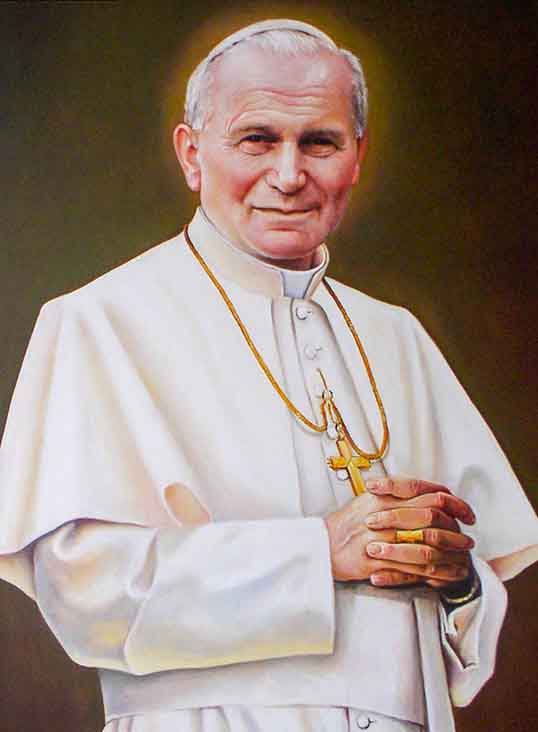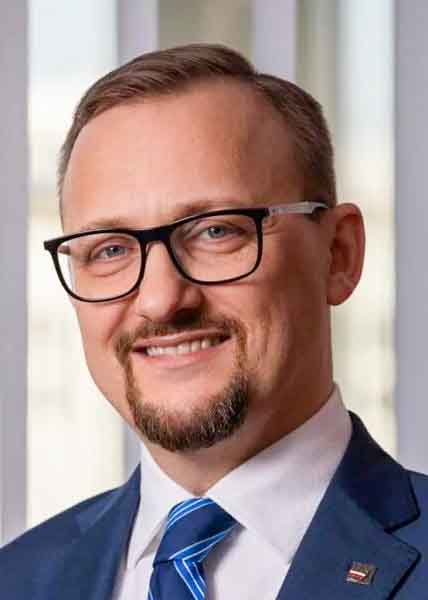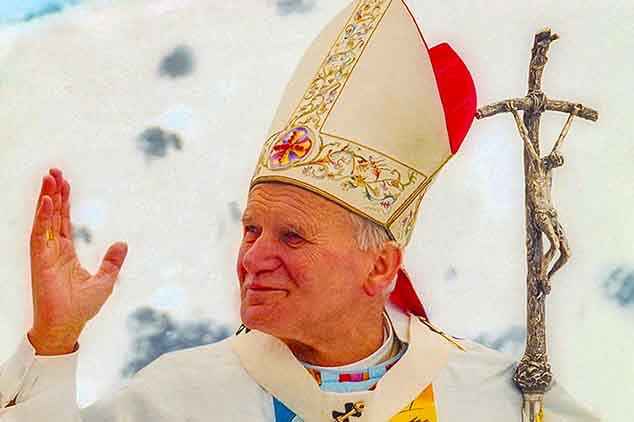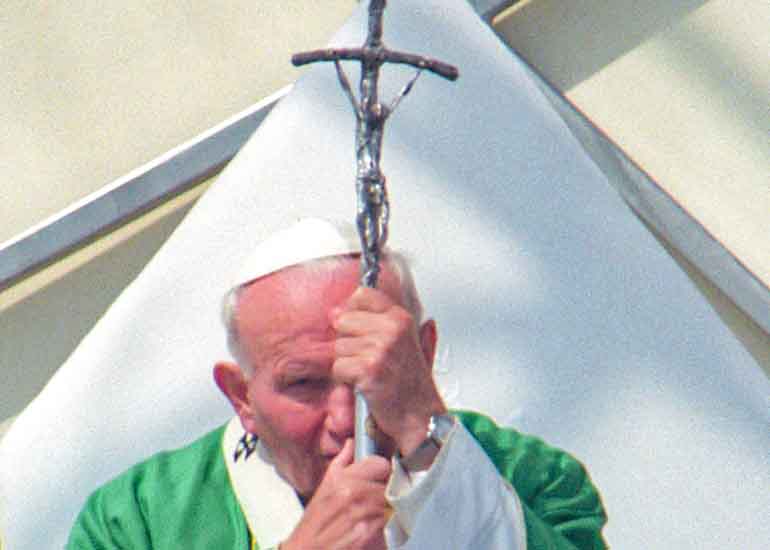On April 2, 2005, at 9:37 p.m., Pope John Paul II died at the age of 84. Thus ended the pontificate of the 264th Pope, the successor of St. Peter, who held his office for 26 years. That evening, just after his death, television and radio programs were interrupted to inform about this event. Throughout Poland, the sounds of church bells calling the faithful to participate in prayer could be heard.

Portrait of John Paul II by Zbigniew Kotyłło (Source: Wikipedia)
Immediately after receiving the news of the death of the Polish Pope, Poland was declared in national mourning until the day of the funeral. The death of John Paul II hit Poles particularly hard, although in reality the entire world was plunged into mourning.
His pontificate was exceptional, as it coincided with the decline and consequent fall of communism in the countries of Central and Eastern Europe, as well as the fall of the Soviet Union. The activities of John Paul II contributed to the emergence of the "Solidarity" movement in Poland.
John Paul II was called the pilgrim pope, because he very often went on pilgrimages all over the world. In total, he went on 104 pilgrimages to 132 countries, including eight to his homeland. He was characterized by ecumenism and respect for other faiths, and he promoted open intercultural and interreligious dialogue, which he always emphasized. He was the first pope in history to visit a synagogue and a Lutheran church. He began an open dialogue with the Orthodox Church. He was an ambassador for the affairs of the young generation. John Paul II's evangelical achievements include 14 encyclicals and 43 apostolic letters.
The last time John Paul II was in Poland was in 2002. Saying goodbye to his compatriots at Kraków's Balice Airport, he said: "And at the end, what can I say, it's a shame to leave!"
The Pope's funeral took place 6 days after his death - on April 8. The ceremony began at 10:00. Delegations from 150 countries from all over the world arrived for the funeral, including leaders from the USA, Great Britain, France, Italy, etc. The presidents of Iran, Afghanistan and Israel appeared. A large delegation from Poland also arrived, headed by President Aleksander Kwaśniewski and Prime Minister Marek Belka. Former President of Poland Lech Wałęsa was also present.
On that day, several million faithful came to Rome, in St. Peter's Square alone there were over 300 thousand faithful, and almost 2 billion people around the world watched the funeral ceremony. The funeral mass was presided over by Cardinal Joseph Ratzinger, and concelebrated by 140 cardinals from the College of Cardinals and patriarchs of the Eastern Catholic Churches. The funeral service was conducted in Latin.
At the end of the funeral Mass, the Gospel Book lying on John Paul II's coffin closed, blown by gusts of wind. For the faithful, this was a sign of the Holy Spirit's influence.
During the ceremony, crowds of the faithful shouted "santo subito" ("Saint now!"), demanding that the Church recognize John Paul II as a saint. The beatification process began a month after the funeral. Six years later, on May 1, 2011, Benedict XVI beatified him, and on April 27, 2014, the next pope, Francis, canonized his predecessor, including him among the saints.
Translation from Polish by Andrew Wozniewicz.








